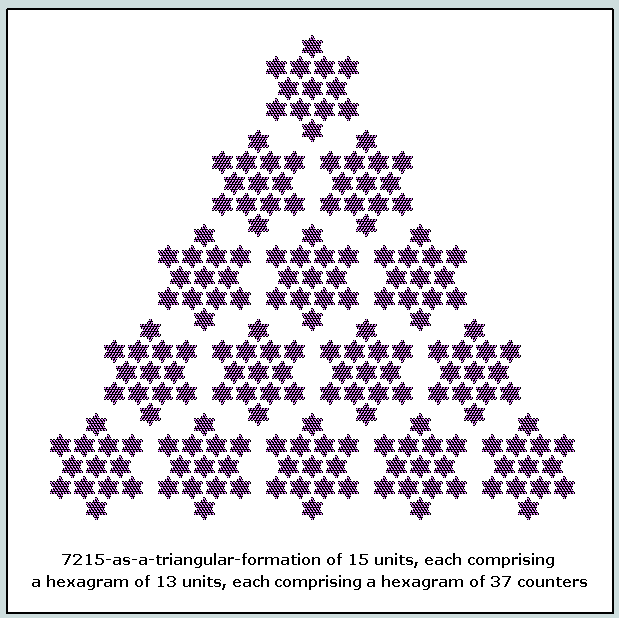
THE SUPERSCRIPTION
This is Jesus of Nazareth the King of the Jews
Introduction
In the Roman Empire, in the case of a criminal on his way to execution, a board on which was inscribed the cause of his condemnation, was carried before him or hung around his neck; the inscription was termed a "title". The four evangelists state that at the crucifixion of Christ the title was affixed to the cross, Mark (15:26), and Luke (23:38), call it a "superscription"; Mark says it was "written over". Matthew (27:37) calls it "His accusation"; John (19:19) calls it "a title". The wording varies: the essential words are the same, and the variation serves to authenticate the narratives, showing that each evangelist wrote separate but complementary details of the account to present a complete picture.*
Luke and John further inform us that the words of the superscription were written in Greek, in Latin, and in Hebrew (Lk.23:38, Jn.19:20). There follow the words of each of the evangelists as they are represented in Greek.
*Extracted from Strong's "Exhaustive Concordance of the Bible"
What the evangelists actually wrote:

Clearly, these four fragments enable us to reconstruct - by simple addition - the complete superscription as it must have appeared at the time, thus:

THIS IS JESUS THE NAZARENE THE KING OF THE JEWS
Some numero-geometrical implications
Greek letters may of course be fairly read as numerals [1]; and words of Greek, as the sums of the constituent letters (termed their CVs or 'Characteristic Values'). On this basis, we may convert the complete superscription, as derived above, into a set of 9 positive integers, thus:

Observe that the individual letter-values here appear above the text, and their sums - the word CVs - below
The complete superscription is thus represented by the sum of these nine CVs:
(1040 + 565 + 888 + 70 + 1239 + 70 + 848 + 1150 + 1345) = 7215
The following graphic reveals the factors of 7215 and their figurate attributes:

Of particular interest, observe
15-as-triangle is a familiar feature of snooker - a game that currently commands a great deal of TV coverage
in the pages of this website attention has already been drawn to the uniquely figurate properties of 37; remarkably, this is also the number that binds together the Hebrew of the Bible's opening verse with the Greek form of the Lord's name - a confirmation of the fact that he, indeed, is the Creator
13 (close companion of 37 in both hexagram and truncated-square series), when inscribed in 37 leaves a symmetrical remainder of 24; 888, CV of the name "Jesus" (which appears in the superscription) is the product of 24 and 37
There follows one of the many possible symmetrical representations of 7215 - and of the superscription:

Some related matters
As with the pictorial representation of Genesis 1:1 [2], this is a numerical triangle which is a multiple of 37; the association is further confirmed by the fact that each of the compound hexagrams of 481 counters are representative of the sum of the CVs of words 3 and 5 of that assertion - viz. 86 and 395; these together read 'God' (the Creator) and 'heaven'. And, placing the matter beyond all reasonable doubt, we finally observe that a simple division of the superscription (separating the Lord from the general context within which he appears) reveals the following:

Here we see a ninefold appearance of the 37th triangular number (representing the sum of the CVs of the closing Hebrew words of the Bible's first verse, viz. 407 and 296, translated "and the earth" - centre of the Lord's activities and affections). Further, these together with the centroid counter (rendered white) total 6328 - the sum of Genesis 1:1 and John 1:1, introduced in an earlier page as "The Greater Creation Triangle" [3]. Symbolically, we may fairly associate this counter with the Lord himself.
On this basis, the superscription is effectively extended to read "This is the Nazarene, the King of the Jews - Jesus - our Creator."
Concluding remarks
In Proverbs 25:2 we read "It is the glory of God to conceal a thing: but the honour of kings is to search out a matter." It is only when one assembles all the elements of the title of the cross of Christ that these wonderful patterns and their significant associations emerge. The conclusion must be that God deliberately concealed this full title across the four gospels in accordance with the stated proverbial principle.
Vernon Jenkins MSc
2009-05-31
Acknowledgement: The author wishes to thank Mr.E.Ryder for drawing this important matter to his attention.